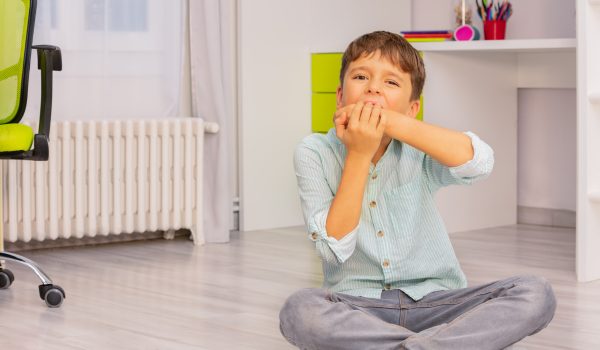
Occupational therapy (OT) plays a crucial role in supporting anxious children by addressing their unique needs and challenges. Anxiety in children can manifest in various ways, impacting their emotional well-being, social interactions, academic performance, and daily activities. Occupational therapists employ a holistic and individualized approach to help children develop the skills and strategies necessary to manage anxiety effectively.
Here are 13 key ways in which occupational therapy can support anxious children:
1. Sensory Regulation:
Sensory Activities: Occupational therapists use sensory-based activities to help children regulate their sensory experiences. This can include activities that promote calmness or alertness, depending on the child’s sensory preferences.
2. Emotional Regulation:
Mindfulness and Relaxation Techniques: Occupational therapists teach children mindfulness and relaxation techniques to manage stress and anxiety. Deep breathing exercises, progressive muscle relaxation, and guided imagery are examples of techniques that can be effective.
3. Social Skills Development:
Role-Playing and Social Stories: Occupational therapists work on social skills through activities like role-playing and the use of social stories. This helps anxious children practice social interactions in a controlled environment, boosting their confidence.
4. Executive Functioning Skills:
Organizational Strategies: Children with anxiety may struggle with organization and time management. OT can help them develop strategies for planning, breaking tasks into manageable steps, and maintaining routines to reduce stress.
5. Coping Strategies:
Coping Toolkits: Occupational therapists assist in creating personalized coping toolkits for children. These toolkits may include items or activities that provide comfort and a sense of security during stressful situations.
6. School-Based Interventions:
Classroom Modifications: OTs collaborate with educators to implement classroom modifications that create a supportive environment. This may include sensory-friendly spaces, visual schedules, or alternative seating arrangements.
7. Fine and Gross Motor Skills Development:
Physical Activities: Engaging in physical activities can help release tension and improve overall well-being. Occupational therapists incorporate activities that enhance both fine and gross motor skills, contributing to a child’s physical and emotional regulation.
8. Parent and Caregiver Education:
Training and Support: OTs provide education and support to parents and caregivers, helping them understand the child’s needs and reinforcing therapeutic strategies at home. This collaboration strengthens the child’s support system.
9. Transition Support:
Transition Planning: Occupational therapists assist in developing strategies to manage transitions, which can be particularly challenging for anxious children. This includes transitions between activities, environments, or various stages of development.
10. Play-Based Therapy:
Therapeutic Play: Play is a powerful tool in occupational therapy. Therapists use play-based activities to build rapport with the child, observe their behaviours, and introduce therapeutic interventions in a natural and engaging manner.
11. Collaboration with Other Professionals:
Interdisciplinary Approach: Occupational therapists often collaborate with psychologists, speech therapists, and other professionals to address the multifaceted nature of anxiety. This ensures a comprehensive approach to the child’s well-being.
12. Gradual Exposure and Desensitization:
Systematic Desensitization: Occupational therapists may employ systematic desensitization techniques to help children gradually confront and overcome anxiety-provoking situations, fostering a sense of mastery.
13. Goal Setting and Positive Reinforcement:
Goal-Oriented Interventions: Setting achievable goals and providing positive reinforcement are essential components of occupational therapy. Celebrating small victories helps build the child’s confidence and resilience.
Conclusion
In conclusion, occupational therapy for anxious children is a dynamic and collaborative process that considers the child’s unique needs and strengths. By addressing sensory, emotional, social, and motor aspects, occupational therapists play a vital role in promoting the overall well-being and resilience of anxious children. The goal is to equip them with the skills and strategies needed to navigate life’s challenges more effectively.

Transform Life is a NDIS registered organisation that provide support for your autistic child, as well as support to you as a parent to best navigate the challenges your child and family face on a daily basis.
Book a consult with an experienced Occupational Therapist at Transform Life to explore how OT can support your autistic child and your family.







